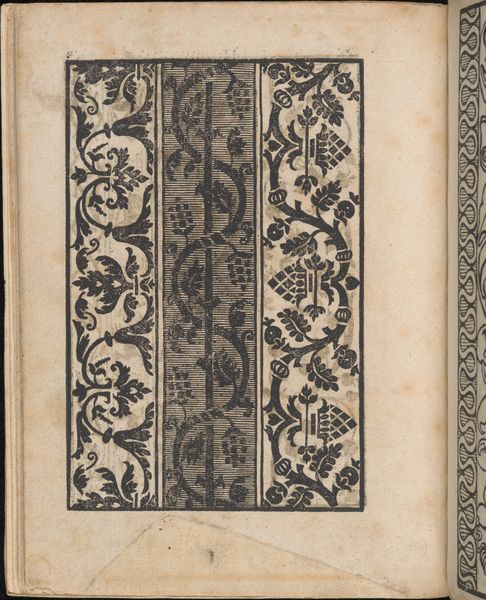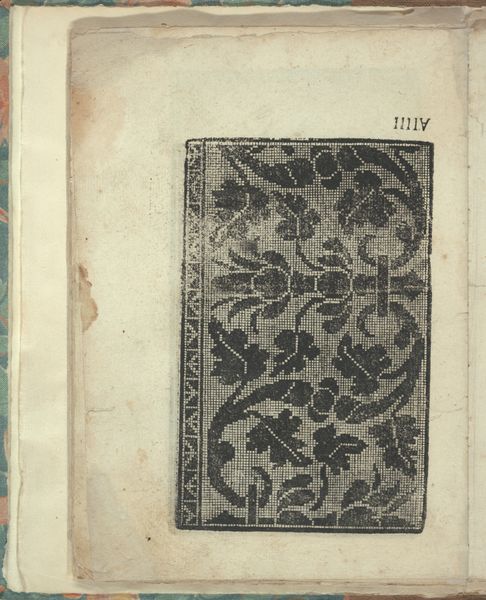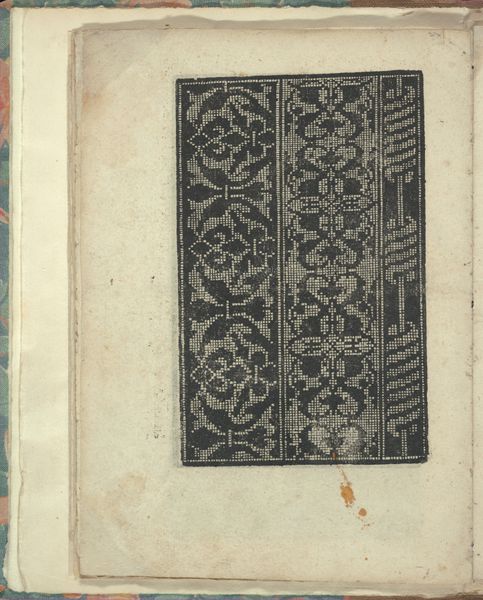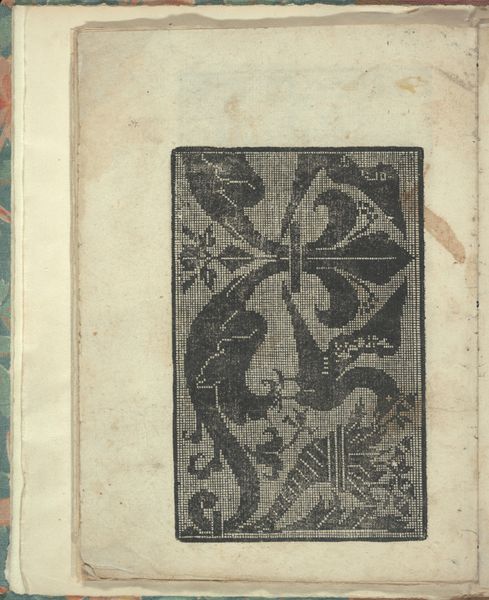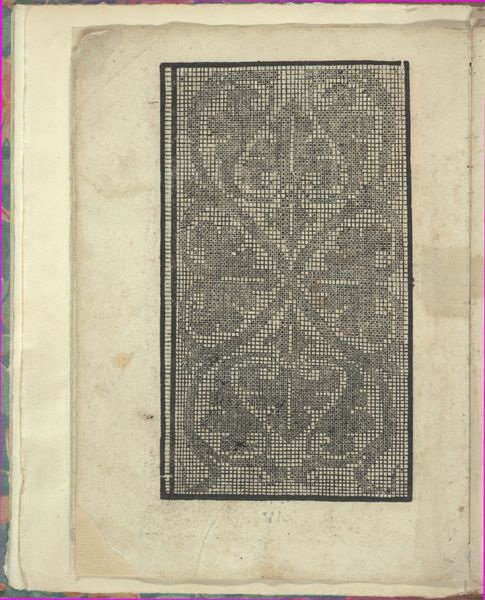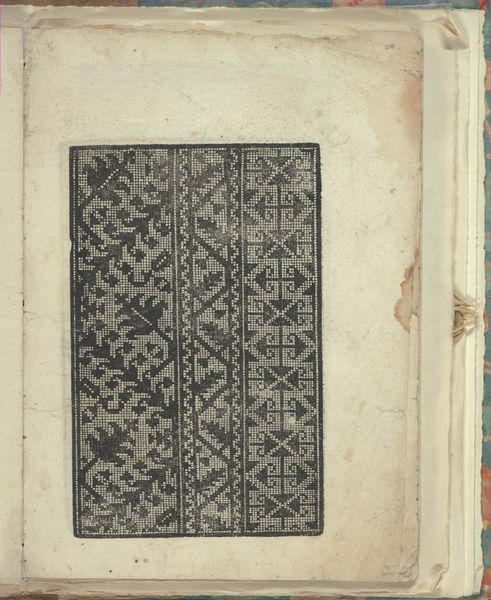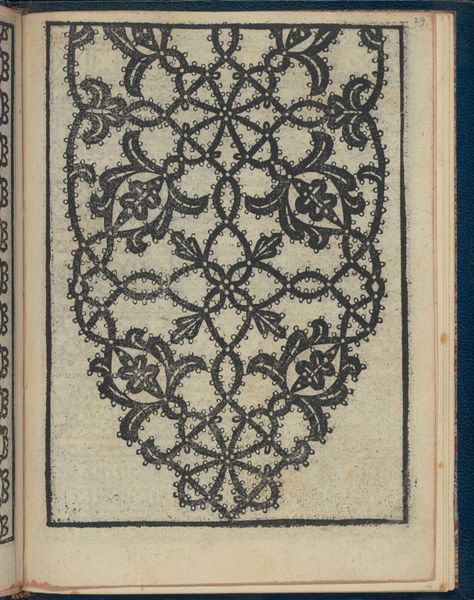
Opera Nova Universali intitulata Corona di racammi, page 34 (verso) 1530
0:00
0:00
drawing, print, woodcut
#
drawing
# print
#
11_renaissance
#
woodcut
Dimensions: Overall: 8 7/8 x 6 7/8 in. (22.5 x 17.5 cm)
Copyright: Public Domain
Editor: This is a page from "Opera Nova Universali intitulata Corona di racammi" from 1530 by Giovanni Andrea Vavassore. It appears to be a drawing, but it’s actually a woodcut print. It has a strong symmetrical pattern with leaves and what look like grape vines. How should we understand it today? Curator: We should place this design within a wider social context. This wasn’t "high art," divorced from everyday life. Rather, it was explicitly designed as a template for embroidery and lace making, both important skills for women. So, how do we understand the accessibility of these patterns at the time, and the work and skill of women producing embroidered cloths, or 'textile art', using it? Do we view these women merely as craft workers? Editor: So, it wasn't just decoration; it's a reflection of the labor and societal expectations of women in the Renaissance? Curator: Precisely. The circulation of pattern books like this also speak to early forms of shared visual culture, but it is imperative to acknowledge it's the design itself, the creative interpretation and application of the patterns by women in the domestic sphere that's crucial to consider when approaching 'decorative' works such as this. The vine, as well, appears not by chance. Is it not important to reflect on ideas of labor, value, production, growth? Editor: That's fascinating. I never considered it that way. Seeing it as part of women's work and the value placed on those skills definitely changes my perception. Curator: Right? The artistry exists in their interpretation and craftsmanship as much as in the original design. Next time, instead of only seeing aesthetic enjoyment or pure commerce, let’s contemplate labor conditions and the place of this object in the historical record. Editor: I definitely will. This was so illuminating!
Comments
No comments
Be the first to comment and join the conversation on the ultimate creative platform.


